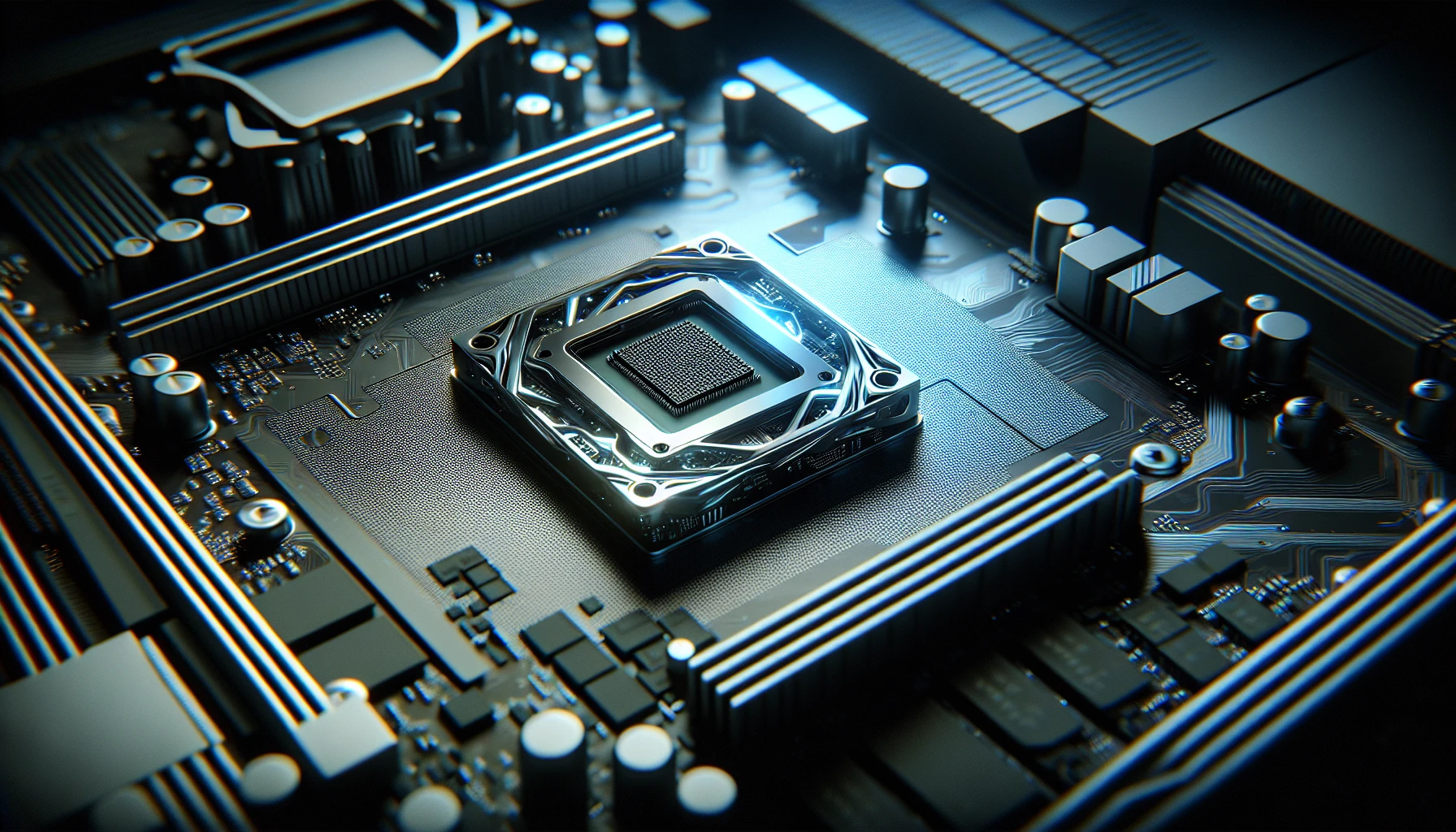Intel Iris Xe Graphics vs Nvidia: Ultimate Performance Showdown
Are you searching for a suitable graphics solution and overwhelmed by the variety of choices? Don’t fret - here is an all-inclusive guide to help you decide between Intel Iris Xe Graphics or Nvidia GeForce. All aspects will be explored, from their performance and features right down to which card suits your needs best. This knowledgeable journey into the world of graphics compares these two giants, so get ready!
Key Takeaways
- Intel Iris Xe Graphics is an entry-level GPU with enhanced performance comparable to the Nvidia MX350.
- Nvidia GeForce cards provide powerful performance and innovative technologies for gaming, while Intel Iris Xe powers everyday computing tasks efficiently.
- When selecting a graphics solution, consider integrated vs dedicated graphics, budget requirements, and purpose of use.
Intel Iris Xe Graphics Unveiled: A Closer Look at the Contender

Intel’s Iris Xe Graphics technology focuses on the entry-level GPU market to provide improved graphics experiences through shared RAM and PCIe 4.0 support, designed for gamers, creators, and HD video fans who crave more advanced lighting effects with better visuals. How does it stack up against Nvidia and AMD? Regarding performance levels, Intel’s Iris Xe falls between a GT 1030 & GTX 950 while and puttinggenuinelyallowwhilecomparable to Nvidia’s MX350 GPU. Putting them somewhere mid-tier at this moment in time when pitted against their rivals’ offerings.
The Architecture Behind Intel Iris Xe
Intel Iris Xe Graphics is an integrated graphics solution powered by the Xe-HPG high-performance graphics architecture. This innovative setup, featuring Intel’s advanced 10nm SuperFin construction and microarchitecture, enables better power efficiency while delivering a maximum clock speed of 1.5 GHz with 68GB/s bandwidth for impressive performance in gaming and content creation tasks alike. The capabilities that come from using Intel Iris come from using Intel Iris. Xe truly allow users to experience efficient graphical functions on their computers or laptops like never before!
Intel Iris Xe in Everyday Use
Intel’s Iris Xe Graphics is an incredible choice for everyday tasks, providing fantastic visuals and steady streaming of videos. The low-power architecture maximizes battery life on laptops and other devices with a base clock speed of 1.3 GHz, enabling multitasking without any issues.
Iris Xe Graphics also offers reliable navigation between multiple browser tabs whilst preserving the performance of graphics renderinggraphics rendering performance. Therecan in each one – there won’t be even a single stutter while using Intel Iris XE!
Nvidia GeForce Lineup: Powering Through Performance

Nvidia GeForce has a stronghold on the gaming-class GPU market, characterized by exceptional performance and cutting-edge features such as ray tracing and DLSS. With NVIDIA Ampere GPU architecture combined with Tensor Cores for AI processing, Nvidia can use limited power while maximizing its capabilities. This confirms why it stands firm among competitors in terms of efficient yet powerful graphics cards for gamers worldwide.
Also Read: Best AI Tools.
Nvidia's Technological Edge: Ray Tracing and DLSS
The Nvidia GeForce series offers remarkable features like ray tracing and DLSS, which greatly change visuals in games. Ray tracing realistically reproduces the way light works in virtual reality, producing lifelike shadows and reflections, an area where Nvidia Geforce cards particularly excel. Deep Learning Super Sampling (DLSS) is another AI-driven feature that trains computers with machine learning algorithms to quickly upscale low-resolution graphics for enhanced gaming performance and image quality.
GeForce Cards in Action: Gaming and Beyond
When deciding between an Intel Iris Xe Graphics and a Nvidia GeForce card, one must take into account their budget, desired performance output, as well as power consumption. Geforce offers superior capabilities across various activities like gaming or professional tasks such as 3D rendering or video editing. The array of models available ensures there is something to suit every need. On the other hand, Intel’s Iris Xe Graphics are also reliable regarding multimedia demands, including graphics processing, but may not give similar results for more intensive operations.
Head-to-Head Matchup: Comparing Intel Iris Xe and Nvidia GeForce

Intel Iris Xe Graphics is a low-end choice for basic activities and lightweight gaming without dedicated video memory like the Nvidia GeForce cards. On the other hand, these Geforce GPUs are excellent choices to meet high standards of graphics as well as for intensive gameplay due to their specific processors and RAMs allotted solely to them. Consequently, both types of graphic chipsets have different advantages in terms of performance capabilities. It comes down to user preference, which suits individual needs best.
Game Performance Face-off
Regarding GPU performance, Intel Iris Xe offers a playable frame rate of 30 fps and above in familiar games running on 4th-generation Intel Core Processors. However, this does come with some freezes or lags while playing higher-intensity video games.
On the other hand, Nvidia Geforce provides an inside look into gaming experiences through its FrameView software, where one can access data for power usage per frame rate and performance metrics by wattage consumed.
Video Editing and Creative Workloads
Intel Iris Xe Graphics has shown a 16% enhancement in video editing workloads compared to Intel’s MX330. It can also tackle 4K tasks as well; Performance may differ based on the specific applications and functions used. Meanwhile, Nvidia Geforce delivers superior creative output with its powerful performance, features like advanced AI powered by their Studio technologies, and an enhanced gaming experience that can’t be beaten. Both xe graphics and iris offer impressive speeds for executing both intel iris xe graphics or Nvidia geforce related activities such as video edits along with smooth graphic intensive visuals enabling reliable entertainment experiences!
Choosing Your Graphics Solution: Factors to Consider
When selecting a graphics solution, it’s essential to factor in integrated vs dedicated graphics and its performance level. Consider brand reliability as well as market requirements before making your choice. Also, be aware of the available VRAM and core clock speeds when comparing options between different models. Integrated GPUs share power from both CPU and GPU, while dedicated ones have their distinct processor with accompanying memory, providing better results at higher energy costs than integrated solutions.
The Role of Integrated vs Dedicated Graphics
When choosing between Intel Iris Xe integrated graphics and Nvidia GeForce dedicated graphics cards, it’s essential to consider your personal preferences as well as the capabilities of your system. Integrated options like Intel Iris are more energy efficient, ideal for general tasks, and light gaming. While discrete graphic solutions from brands like Nvidia Geforce offer higher performance speeds (especially in demanding games or graphical activities), they will require a bit more power usage.
Price-to-Performance Ratio
When weighing the cost and performance of Intel Iris Xe Graphics versus Nvidia GeForce cards, considering budget and purpose is k'ןאey. Typical models for Nvidia Geforce will range from $599 to over two thousand dollars, with some achieving speed rates much higher than that provided by Intel Iris Xe (upwards of 900%). Making a decision based on individual needs can be simplified once you weigh how your specific requirements match these performance benefits against their costs.
The Future Landscape of PC Graphics
As the graphics industry continues evolving, we can expect Intel and Nvidia to further revolutionize it. Intel’s upcoming Arc series cards - A580, A380, and A770 – have quite promising specifications, which will likely give them an edge in the marketplace. On top of that, rumors suggest that Nvidia's RTX 40-series SUPER line could be released as soon as 2024 at International CES follow,ed by its 5000 series around 2025 or sooner.
These two tech giants are leading a high-performance charge with their next-generation boost clock capabilities across multiple platforms. The PC graphic scene is set for innovation like never before! We are sure both companies would continue pushing each other beyond what was previously thought possible, making this scenario exciting!
Summary
When choosing between Intel Iris Xe Graphics and Nvidia GeForce, considering the differences in terms of integrated vs dedicated graphics, price-to-performance ratio, and upcoming developments can be really helpful. The former provides an affordable solution for everyday tasks and light gaming while offering entry-level performance. Meanwhile, Nvidia Geforce cards guarantee powerful results suitable for professional and intensive gaming activities. In other words, by considering all these variables, you’ll likely come up with the best option that fits your preferences perfectly.
Frequently Asked Questions
Which is better, Intel Iris Xe or Nvidia?
Unlike Intel’s Iris Xe, Nvidia is usually seen as superior in power and speed. The newest cards from Intel might rival this performance.
What graphics card is equivalent to Iris Xe graphics?
The Intel Iris Xe graphics card is roughly equivalent to entry-level dedicated graphics cards like NVIDIA’s GeForce MX series or AMD’s Radeon Vega series. It can beat AMD's older Vega 7 and 11 GPUs but not AMD CPU chips with iGPU components from the Ryzen 7 and 9 lineups.
What is the main difference between integrated and dedicated graphics?
Integrated graphics use a portion of the CPU’s energy, while dedicated graphics are equipped with their processor and memory to maximize efficiency and conserve power. Integrated options do not deliver as solid performance as those explicitly devoted to this purpose.
What is the price-to-performance ratio, and how is it calculated?
To get an idea of how a graphics card’s performance matches its price, the ratio is worked out by dividing the data from the card’s performance by its cost and multiplying that number by 100.
What can we expect from the future landscape of PC graphics?
PC graphics are in good hands with Intel and Nvidia striving to provide cutting-edge solutions for their consumers. Offering numerous possibilities, both companies continually develop products and advancements that will keep up with the demands of gaming on a personal computer. Customers can be confident that they can access superior graphic capabilities when utilizing the company’s hardware or software technology as part of their setup.